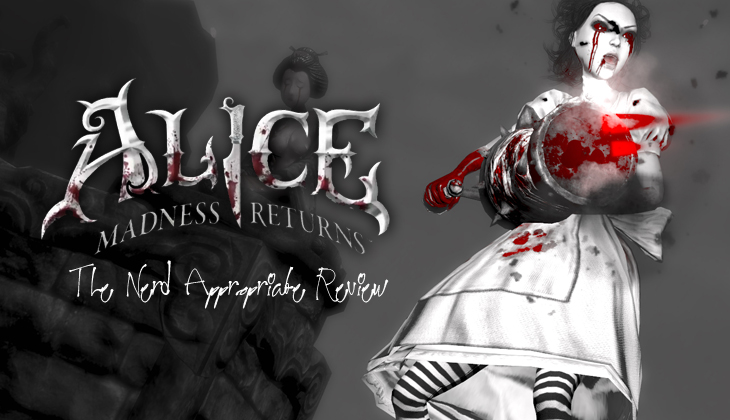
Alice: Madness Returns is the much anticipated follow up (by me, anyway) to 2000’s PC/Mac game American McGee’s Alice – the dark and gritty telling of Alice’s post-Looking Glassadventures in what has now become a twisted version of Lewis Carroll’s Wonderland. The original game had Alice following an anorexic, pierced Cheshire Cat around a grotesque Wonderland, presumably due to Alice’s inclement insanity, slashing her way through the Red Queen’s guards amongst other familiar faces from Carroll’s universe with a bloody knife, and the sequel delivers more of the same.

Hipster Alice had a dark and gritty reboot before it was cool.
Madness Returns opens with Alice living in a home under psychological care, apparently now free from the asylum where she was held in the original game after a mysterious house fire killed her family, leaving Alice as the sole survivor. Now, seeing as I have little to no recollection of the actual plot of the first title – I played it while I was in college, don’t judge me, I don’t really remember a whole lot from those years – I’m not exactly sure what landed her in the new home, but who cares because within about 5 minutes of playing Madness Returns, Alice is yet again sucked back into evil Wonderland, once again fighting off attackers with her trusty, blood stained blade. If Lewis Carroll’s novels seemed inspired by LSD induced hallucination, the world of the games seems more like a vision spawned from a bad acid trip. Or so I’m told… how would I know? What did I say about judging!?
Gameplay
Ok, ok, enough with the scene-setting. It doesn’t really matter, anyway. Trying to make sense of the underlying plot of this game was like trying to make sense of a dream someone had that they’re telling you about. Who does that anyway? Am I really supposed to care about the anthropomorphic toaster you chased down because it stole your intangible ability to feel gratitude?
But I digress…. Following suit with the first game, the gameplay here is run of the mill 3rd-person adventure / platformer. The controls have been modified from the original to work well while using a controller instead of a mouse and keyboard, and for the most part they perform just fine.
The maps are easily navigable, with plenty of hidden pathways to explore, and not much time is spent being frustrated over missing a platform on a poorly timed jump. (While we’re on that, if I can be allowed to complain for a second, can someone at EA explain to me why, if I die mid-level at the hand of an enemy combatant, or because I fell off a bridge, I’m respawned in practically the same location of my death, yet if I die during a boss battle I have to start at the beginning of the level? Weak sauce, yo… weak sauce.) Maps are standard adventure / platformer fare, with varying levels of topography for the player to navigate, along with your standard floating platforms and bridges. Alice also receives an unlimited supply of a shrinking potion early on in the game. The shrink mode is activated with a pull of the trigger, allowing Alice to get to otherwise unreachable areas of the map. While in shrink mode, also revealed are special hidden sections of the levels as well as “graffiti” (presumably drawn by the Cheshire Cat) that keeps you moving in the right direction on a board and points out special items, enemies or hidden treasures.
Also peppered in are a handful of non-3rd person events, such as a side scrolling vehicle sequence, that serve their purpose well in breaking up the game’s repetitive monotony.
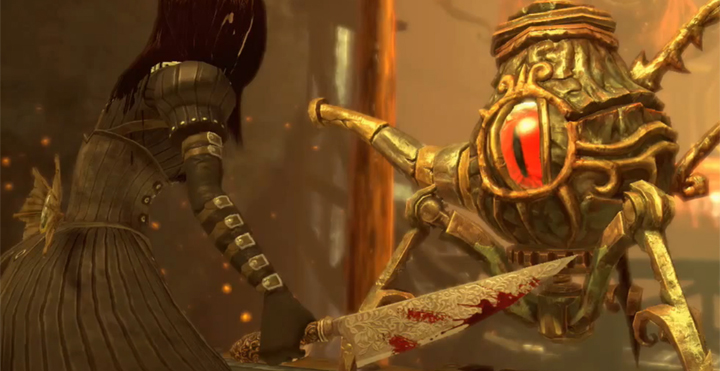
The fighting system has seen a bit of an overhaul, with more attention paid to close-quarters combat, and some clever enhancements have been made such as enemy lock-on and evasive dodging, as well as a Matrix-y semi slow-mo effect applied while you’re hacking and slashing that looks cool without getting annoying or cheesy. The only problem I had with the new fighting system is that, in many confrontations, it relies heavily on the dodge button, and unfortunately the camera system doesn’t seem to be sophisticated enough to keep the baddies in view while you’re darting around their attacks. This leads to several of the almost too prevalent “F&$k this game!” moments you are certain to experience while playing which will most certainly lead to potential controller damage, not to mention the well being of your television. A near mastery of the combat techniques is required far too early in the game, where even in the first level you’re faced with several non-boss, multiple attacker fight sequences that completely rely on the use of dodging, and dying that many times that early on in a game is not a great confidence builder.

Is this your card?
This problem is lessened to an extent as you progress through the levels by the new and welcome addition of weapon upgrades. Alice’s knife, her pepper grinder turret, as well as a couple of special weapons found throughout the game are all upgrade-able, and make the grunt encounters much easier to deal with. Weapon upgrades are purchased with teeth collected throughout the levels. That’s right, teeth. I don’t know, dude, this is Wonderland. You’re following a talking cat through a world of robotic dormice, evil trolls and giant, floating mushrooms. Teeth as currency seems about as logical as anything else in the game. Here teeth are like Mario’s coins, Sonic’s rings or Lindsay Lohan’s probation violations. (Pop culture reference!)
Also returning from the first game is Alice’s “Rage” mode which, when activated, makes Alice go all aggro crazy, increasing the speed and damage of her attacks and making her invulnerable to enemies. Previously Alice would have to find certain spots in the game to enable this mode, but this time around the Rage mode option is enabled when Alice’s health drops too low, giving her a fighting chance to pull through an encounter.
Something that wasn’t made immediately clear but that I was quite happy to discover is that weapons can be upgraded from the pause menu at any time, as opposed to needing to visit a specialty weapon or armor hut at a predetermined location in the game. I can’t think of another game that does anything like this off the top of my head, though I’m sure they exist, but whether this was done out of laziness or consciously by the developer, it’s extremely convenient.
So pretty much, that’s the game. Scour the level, collect teeth and special items, fight some dudes, fight a boss and repeat. The gameplay is very similar to the original title, but for me also drew similarities to another game that I greatly enjoyed: Nintendo 64’s Ocarina of Time. Unfortunately this is not a compliment seeing as Ocarina was released 13 years ago.
The dated feel of Madness Returns’ gameplay is an excellent segue into touching on the look of the game’s graphics, so let’s do that, shall we?
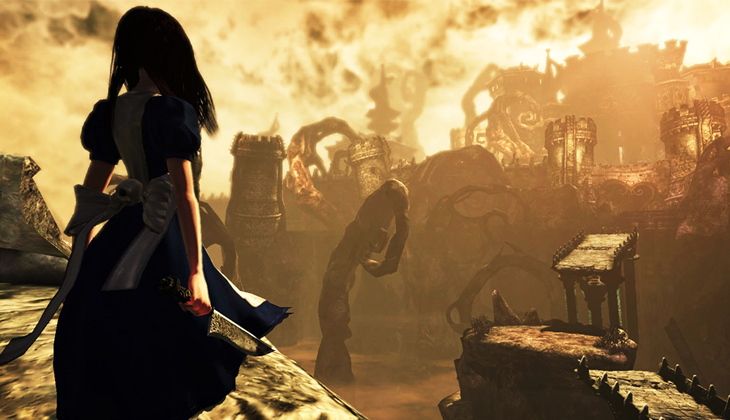
Graphics
I TOLD you we were going to discuss graphics next! It’s almost like I knew it was coming.
If I were writing this review for a 360 launch title, my words would presumably be much kinder, but alas, that is not the case. This game does not look like a current gen title, especially not when I’m playing it following play throughs of L.A. Noire, Assassin’s Creed 2 and Red Dead Redemption. Nothing here looks bad, per se, it just looks old.
The characters and environments are well designed enough, and the 2D cut out animation sequences look fine, but it seems that the Unreal Engine is not quite up to the task of doing all of the game’s complex geometry the justice it deserves. Pixelation, slow draw times on close objects, the quirky camera motion I mentioned above, all have no place in a modern title. Additionally, there are far too many invisible walls blocking off unexplorable areas of the maps, something I haven’t really run into since playing older PC games. Be prepared to jump from a platform to what appears to be a hidden pathway, only to be stopped mid-jump by one of these invisible walls and fall to your doom into a pit of lava, or water, or whatever. Design flaws like these are inexcusable these days, and in accordance I will not attempt to excuse them in any way.
Aside from the sub-par rendering, the environments and characters themselves were crafted creatively with decent enough care and detail, and there is some good variety in level design as you progress from chapter to chapter.
So should I buy it, or what?

Last Halloween, Cheshire Cat went as Mike Tyson.
There are 2 types of people that should buy this game: rabid fans of the original Alice, and die-hard platformer/adventure fanatics. If you thought Ocarina of Time was the greatest thing since blood-stained-knife sliced bread, you’ll probably have fun exploring the world of Madness Returns, and won’t become as quickly bored with the game’s repetitive nature as some others might.
On that note, neither of these 2 groups of people should bother with coughing up full price cash for this game. While I don’t necessarily feel ripped off – I get the impression that this title was produced on a limited budget, and definitely wasn’t just a “cash grab” trying to profit off of the moderate success of its 11 year old predecessor – I would probably be less inclined to be quite so critical were I to have paid 30 bucks instead of 60. At the end of the day, Alice: Madness Returns is a solid sequel and decent adventure game that suffers from some poor graphical and design flaws and repetitive gameplay, but it should still be considered by fans of the original game or the genre.
But wait, there’s more…
For those of you that purchase the game new, you will receive a download code for a free copy of the original American McGee’s Alice playable on your Xbox 360 (Screw you, used game buyer!). And here’s where my tears begin to flow. Excited to relive the original adventure, I immediately started the download, and quit my campaign in the sequel to play the first game as soon as the download completed.
As far as I can tell, nothing was updated with the original game’s geometry, and you can definitely see that it’s an 11 year old title, but Gosh darn does it still look gorgeous. The graphics crisp, and the colors vibrant (something oddly missing from the sequel), I was somewhat giddy getting ready to explore Wonderland again for the first time.
And then I started playing, which is where my excitement met its demise. The original game had an enemy lock-on mechanism of sorts, though it worked differently than it does in the new Alice. Whereas in Madness Returns enemies are locked on to with a pull of the left trigger, the original game auto-locked on enemies as your mouse drew the crosshairs closer to your target. This worked very well on the PC, but translates horribly to a controller. It seems that the controls were not tweaked at all, and the lack of precision that a controller provides versus a mouse makes fighting, and in some places navigating the game, down right unplayable. So fair warning: any of you out there who, like myself, consider the bundling of the original game with the sequel as an added value, get ready to be let down. I plan on giving the original game a second chance, and perhaps practicing with the controls will lead to a smoother experience, but my limited game time thus far has done nothing but burst my excitement bubble. Aww… poor bubble.







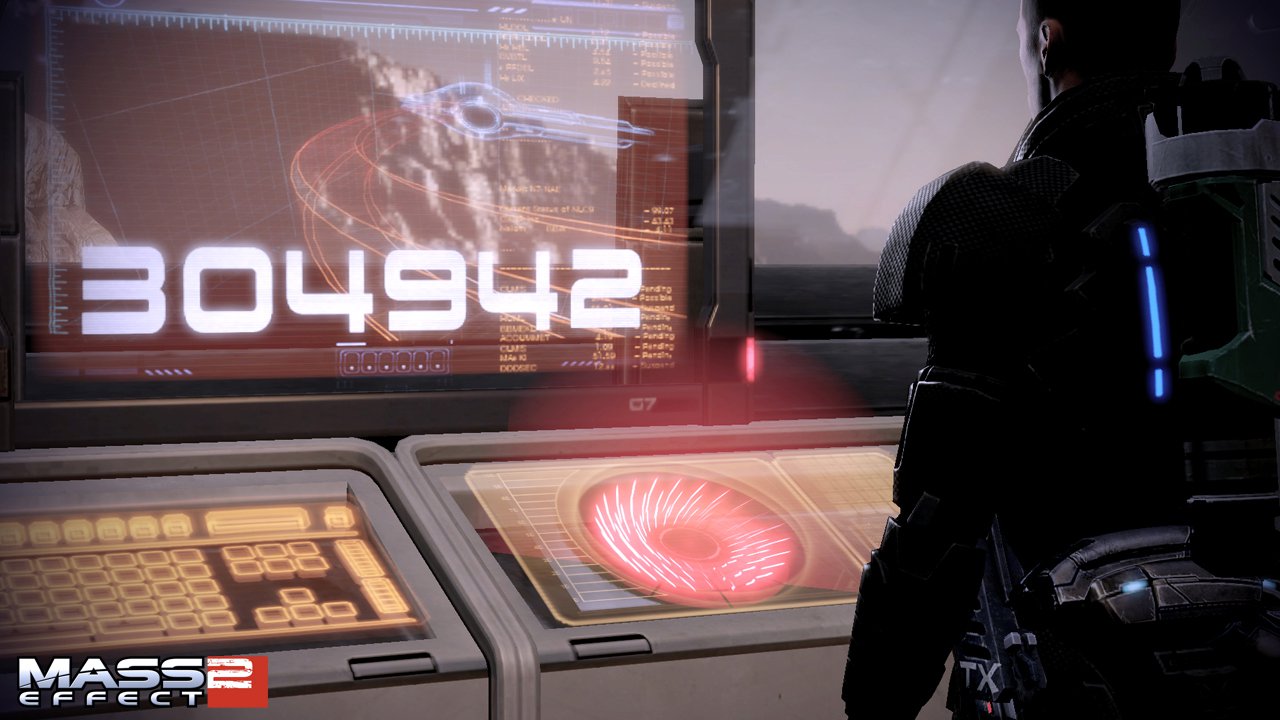
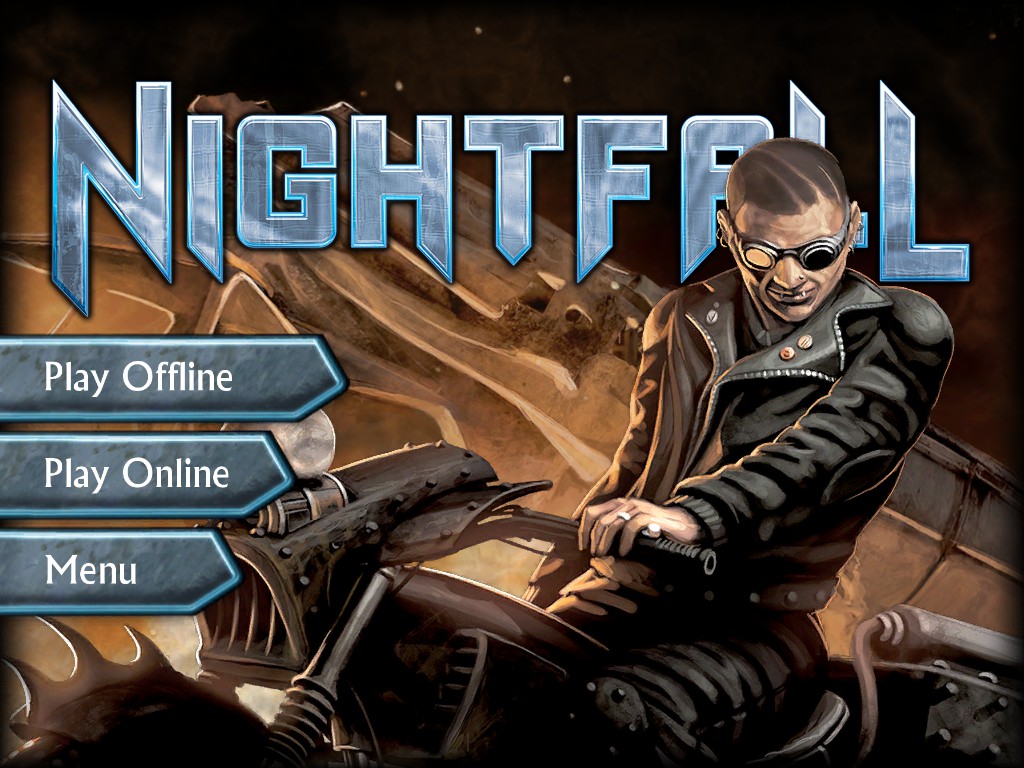

Great analysis. I’m still on the fence with this one. Also, considering that copies of the original PC version were going for upwards of $100 on ebay before this game’s release, you’d think there would be more of a reason to refine the gameplay in the downloadable version included with the retail box.
i love anything alice. and “Bo Balien”